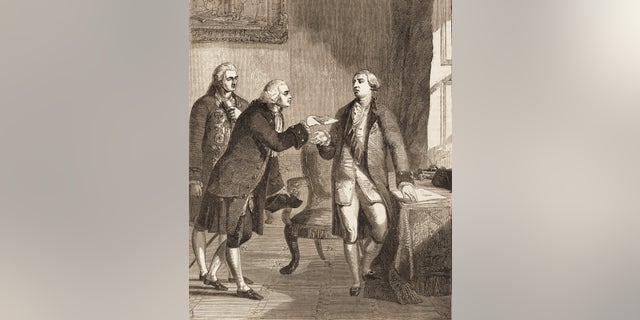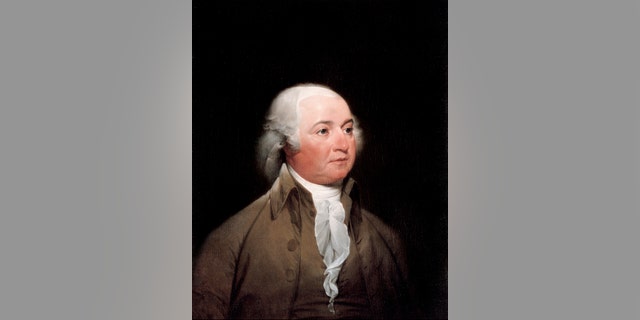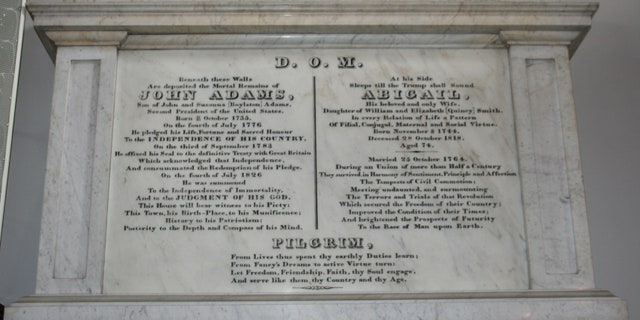NEWNow you can take heed to Fox Information articles!
John Adams, the bookish and good Founding Father who gave each the American Revolution and constitutional authorities their mental foundations, was chosen by the Continental Congress to steer peace talks with Nice Britain on today in historical past, Sept. 27, 1779.
“Alas!” wrote Adams in a letter to French diplomat Chevalier Anne-César de La Luzerne.
“After I replicate upon the significance, delicacy, intricacy and hazard of the service, I really feel quite a lot of diffidence in myself.”
The New England patriot, who on the Second Continental Congress passionately implored the opposite colonies to affix Massachusetts in its revolt in opposition to the crown, had simply returned from his first mission to Paris when he acquired phrase of the brand new task that may ship him again abroad.
ON THIS DAY IN HISTORY, SEPT. 26, 1960, KENNEDY, NIXON BATTLE IN FIRST TELEVISED PRESIDENTIAL DEBATE
“With out consulting [his wife] Abigail, Adams accepted Congress’ supply to return to Europe as minister plenipotentiary to barter peace with Britain, every time America’s enemy was prepared to come back to the desk,” notes PBS in its “American Expertise” collection.
“Adams hadn’t sought the publish, however reveled in Congress’ almost unanimous determination to nominate him.”

Engraving reveals Founding Father and future American President John Adams, middle, as he greets King George III of England as U.S. ambassador to St. James’s Court docket in 1785.
(Inventory Montage/Getty Photos)
His new position would result in one of many nice and largely unknown adventures in America’s journey to independence.
Adams, accompanied by his sons, John Quincy, age 12 (fellow future president), and Charles, 9, departed from Boston in November to set sail for Europe aboard French frigate Wise.
AMID NEW GUN LAWS, HERE’S THE TRUE STORY BEHIND THE ‘RIGHT TO KEEP AND BEAR ARMS’
The ship was quickly struck by a daunting storm that threatened to sink it.
“By the point the storm handed, the ship was leaking so badly that two pumps needed to be manned day and night time, unrelenting work wherein all arms took half, together with John Quincy,” wrote historian David McCullough in his epic “John Adams” biography.

Portrait of President John Adams by John Trumbull.
(GraphicaArtis/Getty Photos)
“The scenario was alarming. Within the occasion of one other storm or an encounter with the enemy, the captain defined, they might haven’t any likelihood.”
The ship was compelled to land in Ferrol, Spain, removed from their supposed port of Brest, France — and 1,000 miles from Paris.
“These are the occasions wherein a genius would want to dwell.” — Abigail Adams
Adams and his sons, plus a employees of 4 and Spanish guides, set off by foot and mule prepare for the arduous journey over the Pyrenees Mountains through poorly constructed roads.
“In every single place he noticed poverty and distress, folks in rags,” McCullough wrote. “There have been days of rains, fog and snow, mountains that went endlessly on and on, mountains like ‘a tumbling sea.’”
ON THIS DAY IN HISTORY, SEPT. 21, 1780, BENEDICT ARNOLD BETRAYS CAUSE OF AMERICAN INDEPENDENCE
John Quincy had joined his father’s first mission to Europe and balked at this sudden return. His mom, Abigail, a dedicated revolutionary and gifted author, satisfied him to go.
“These are the occasions wherein a genius would want to dwell,” Abigail wrote to her son. “It’s not [in] the nonetheless calm of life, or the repose of a pacific station, that nice characters are fashioned.”

In a tribute to his mother and father, President John Quincy Adams later wrote that the Treaty of Paris represented for his father the “redemption of his pledge” of American independence.
(Kerry J. Byrne/Fox Information Digital)
Adams and his crew survived the brutal mountain journey and reached Paris in February 1780, three months after leaving Massachusetts.
Fellow Founding Fathers Ben Franklin and John Jay ultimately joined the Adams mission. The three males negotiated from a place of power after George Washington’s victory over Lord Cornwallis at Yorktown in October 1781, the decisive battle of the American Revolution.
CLICK HERE TO GET THE FOX NEWS APP
The Treaty of Paris was signed in 1783, formally recognizing American independence.
“His Brittanic Majesty acknowledges the stated United States … to be free sovereign and Unbiased States,” the treaty states, including that the crown “relinquishes all claims to the Authorities, Propriety, and Territorial Rights of the identical and each Half thereof.”
The Treaty of Paris represented a robust private triumph for John Adams.
The diplomatic victory got here seven years after Adams and his fellow revolutionaries publicly dedicated their lives to the trigger; eight years after combating broke out in Lexington and Harmony; and 13 years after the primary American protesters had been killed by the British in Boston.
John Quincy Adams later proclaimed that the Treaty of Paris represented a robust private triumph for his father, as he delivered on his daring promise to combat for a brand new nation ruled by legal guidelines and never by males.
OUR AMERICAN FLAG: HOW TO FOLD IT PROPERLY AND OTHER COURTEOUS CARE TIPS
“He pledged his life, fortune and sacred honor to the independence of his nation,” wrote John Quincy Adams, the phrases inscribed on a monument above the altar of the “Church of the Presidents” in Quincy, Massachusetts, the place each Adams presidents and their first girls are entombed at this time.
CLICK HERE TO SIGN UP FOR OUR LIFESTYLE NEWSLETTER
“He affixed his seal to the definitive treaty with Nice Britain, which acknowledged that independence and consummated the redemption of his pledge.”
Weblog Curated by www.BobsSEO.net
from Bobs SEO https://ift.tt/yKXD0oz
Bobs SEO expert
No comments:
Post a Comment